Part 1 is here. Part 2 is here. Part 3 is here.
Yangmingshan National Park is a great place to be for any outdoorsman or a nature freak. I am the one.
Mountain hikes, river trails, well-known and not so hot springs, steaming fumaroles, countless birds and flowers - this vast green space covering over 100 square km will take you months to explore and still to discover something new afterwards. And all this is very close to Taipei City center, as the park is actually categorized as the urban one. Reminds me Seoul geography where you can start your hikes from within the city as well.
I have visited the area numerous times during the last 15 years. During these trips my trusted guide was this book written by Richard Saunders and published in 2006.
I still believe those days we were more “street smart” without Google maps, hovering with a flashlight over the small maps, relying on the instincts or just half-voluntarily and full-happily allowing ourselves to get lost.
Technological convenience of modern navigation tools is obvious, but sometimes I do feel less “terrain intelligent” if I just follow digital suggestions. It is harder to repeat the way and absorb the “aroundness”.
Using this book one day under a sprinkling rain and guessing my ways I ended up in a very rustic hot spring area of Yangmingshan Park called Macao. Probably it was around 2008. The place was similar to one-coin, open air Japanese communal baths where you put your luggage on a shelf, change into a provided basket, and wash yourself from “oke” bucket using your own body soup if any. No shampoos, no showers, only wooden benches and shelves. I remember there were only 2-3 people inside and I was interchanging my do’s between bathing and reading. One vending machine took care of the hydration during this comfy ritual. So, this May I attempted to find the place combining the search with the hike via historic Jinbaoli Trail.
From Shilin MRT station I took bus S15 (there are other routes) to Lengshuiken. It takes about 45 minutes or so depending on the traffic, buses are always full (hence I often prefer to walk trails reachable by Taipei MRT), so line up in advance. There is a free public bath in Lengshuiken if you are interested. You need to bring your own soap/wash and towel, locals will evaluate how vigorously you rub and wash your body before entering the bath. Especially in the female section.
Next destination is Qingtiangang, 1.5 km away, and I found the path hard enough, with many ups and downs. There is a suspension bridge on the way, where I enjoyed a sound cocktail of monks chanting and birds singing.
Once I reached Qingtiangang Grassland I moved towards Fengguiko (signs a plenty to point you). I walked this route a few years ago, but today’s target is different.
On the way was greeted by some locals munching on vegetarian buffet.
Near Jinbaoli Gate (there is a sign also) I had my tea break and then moved left down towards Shanghuang Creek only to realize on the way that I forgot my tea flask on the rock where I was sitting. Well…
The trail towards Shanghuang Creek parking is basically already a part of Jinbaoli trail. The trail was used by ancient traders to move tea, sulphur and other commodities. Japanese also built a parallel track here for their logistics needs during Taiwan occupation in the first half of 20th century.
I was right to choose longer 3 km option as it had less man-made steps which are always harder on the knees when descending. This 3 km long section of the walk is also called Japanese trail and was widened by Japanese when they were digging for clay in the area.
It is said that Yangmingshan area was formed thousands of years ago as a result of volcanic activity. This activity is still very much visible, and the area was widely used to mine sulphur.
I was completely in the green green forest after Dayoukeng, and the path looked wider here.
On the way I passed former residence of Wild Boar Feng, well known in his days as a smart boar hunter.
More history reminders here. Xuyang bridge was built in 19th century to transport tea through the creek.
Near the bridge I met two local hikers. We chatted a bit about directions, the heat and the beauty of the area, I also mentioned that I lost my tea thermos. “Where was that"? - “Just on the rock near Jinbaoli Gate”, I replied. “Well, we are heading there, and if we find it we will Line you”, promised Mei, one of the hikers. Nice, is not it?
A small waterfall near the end of the route.
JInbaoli trail ends here, near the creek.
But I am yet to find my hidden hot spring. Google map advised that I should try one location near Macao Bridge (not to be confused with HK-Zhuhai- Macau bridge). I don’t remember passing any bridge when I visited this now mysterious onsen years ago, but I gave it a chance and took bus 1717 to Macao Bridge.
I walked under the bridge in an attempt to find the place, but instead was welcomed by a few fruit farms. At some stage I started to think that this miraculous hot spring was in my dreams. But went back to reality. Don’t trust Google Maps! I know it, but just wanted the place to be there…
If you know the place still exists, please let me know,
Nevertheless, the view of the East China Sea from the bridge was magnificent. No people, a few passing cars, surreal in a way.
On the bus back town I receive a Line from Mei, “We will drop your flask at the hotel, as we live nearby”. Nice people, great country, beautiful nature.
Next week I am off hiking at Rebun Island in Hokkaido, Japan. Stay tuned and enjoy your summer if you can or winter if you down under.
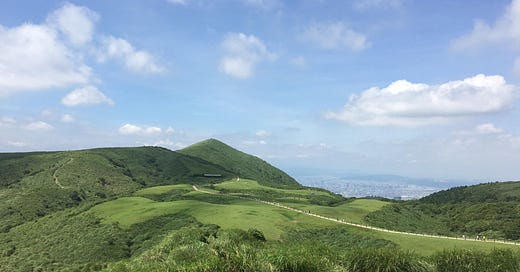



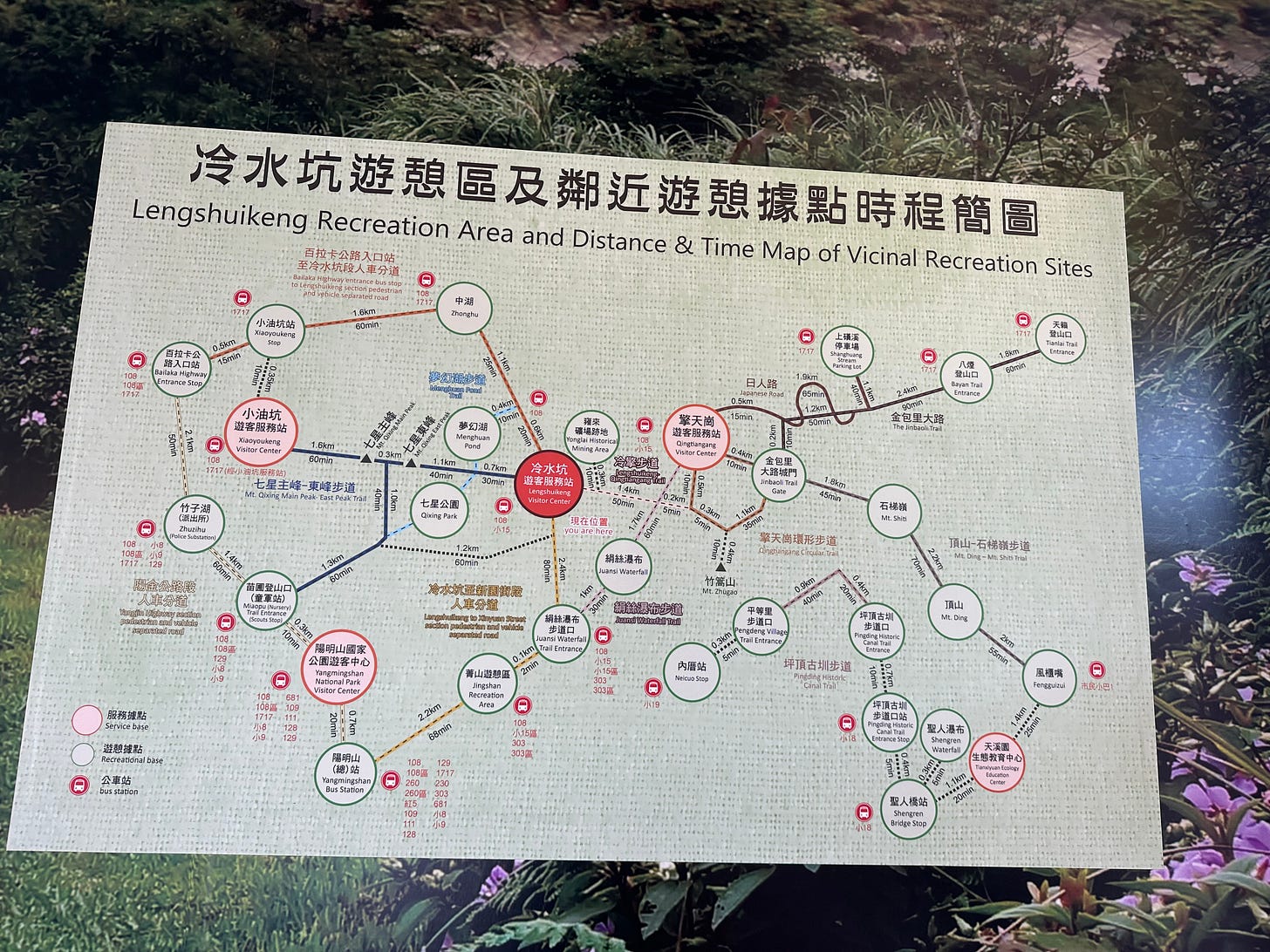
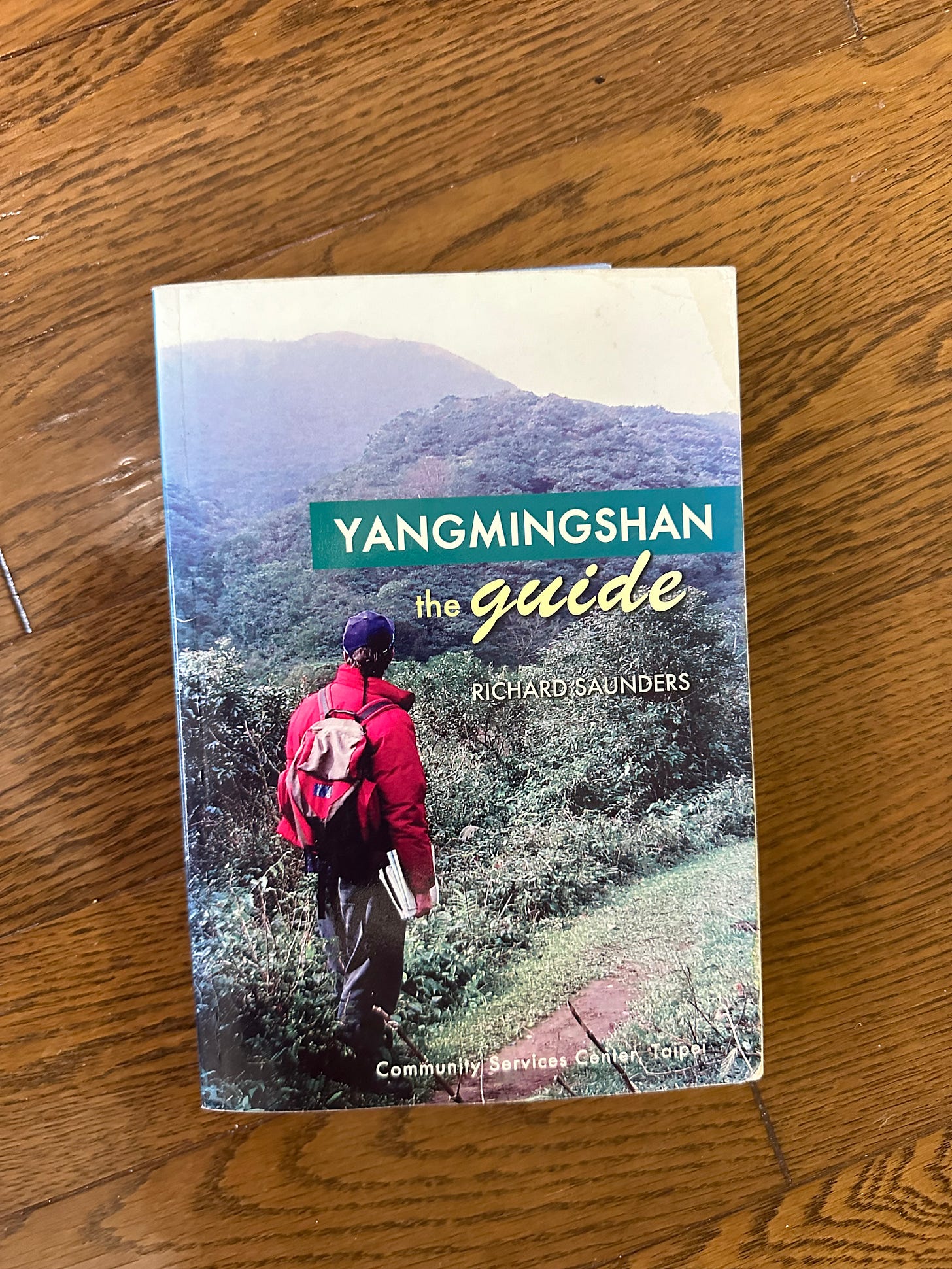
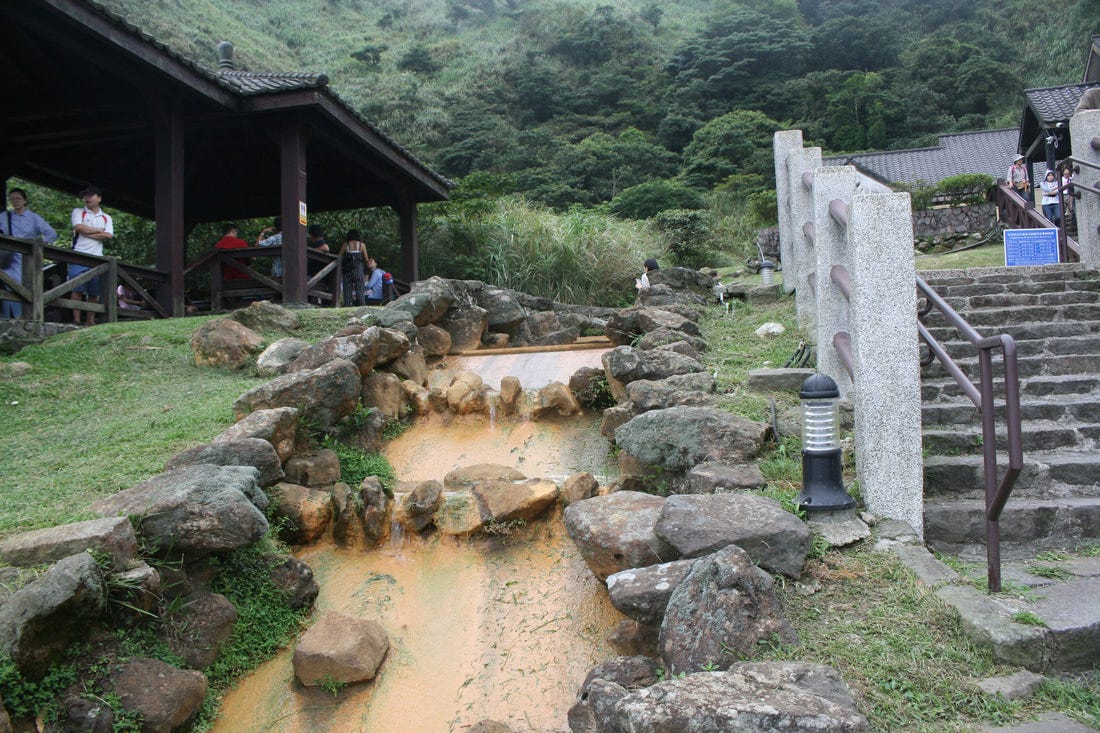
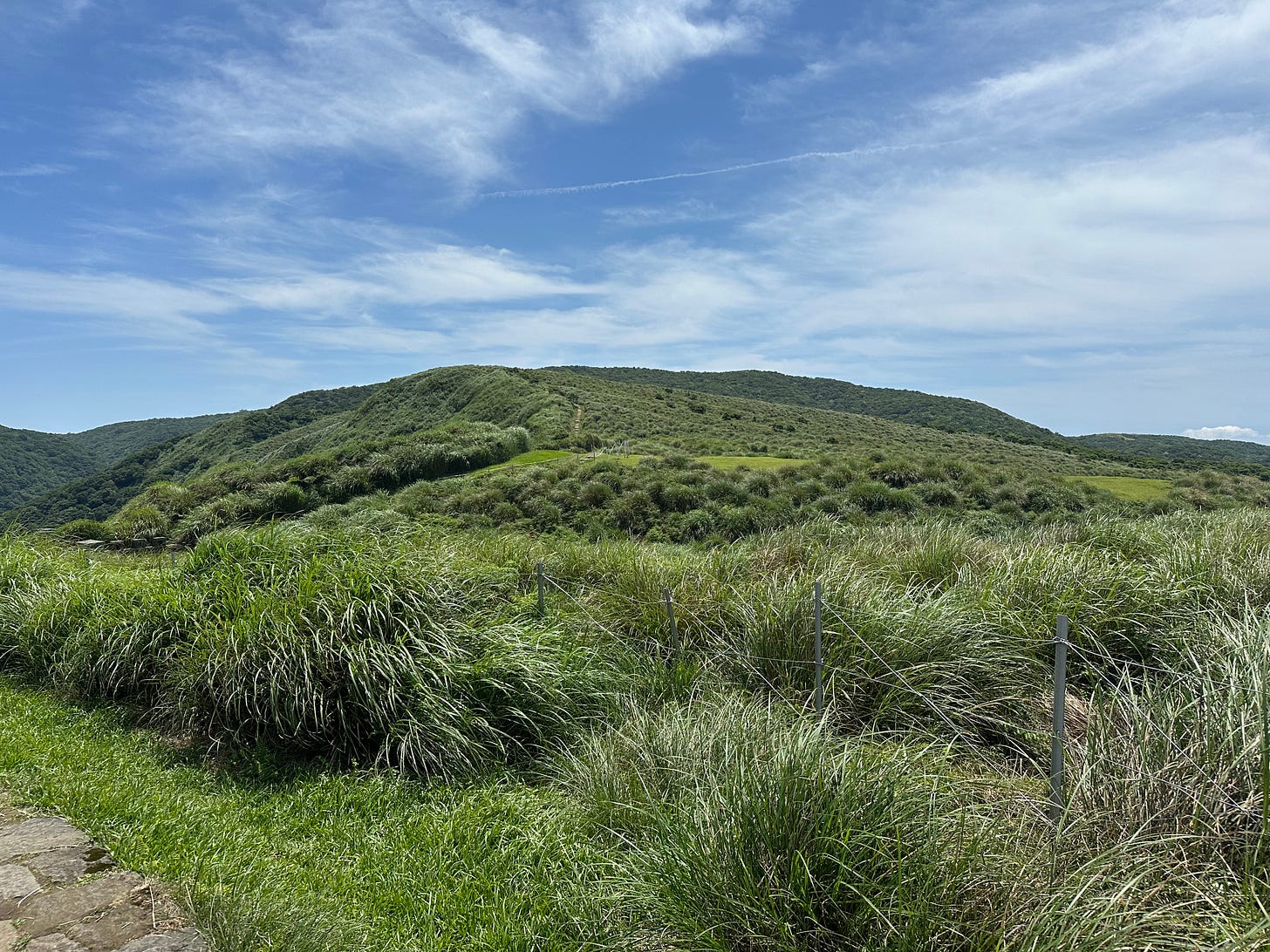
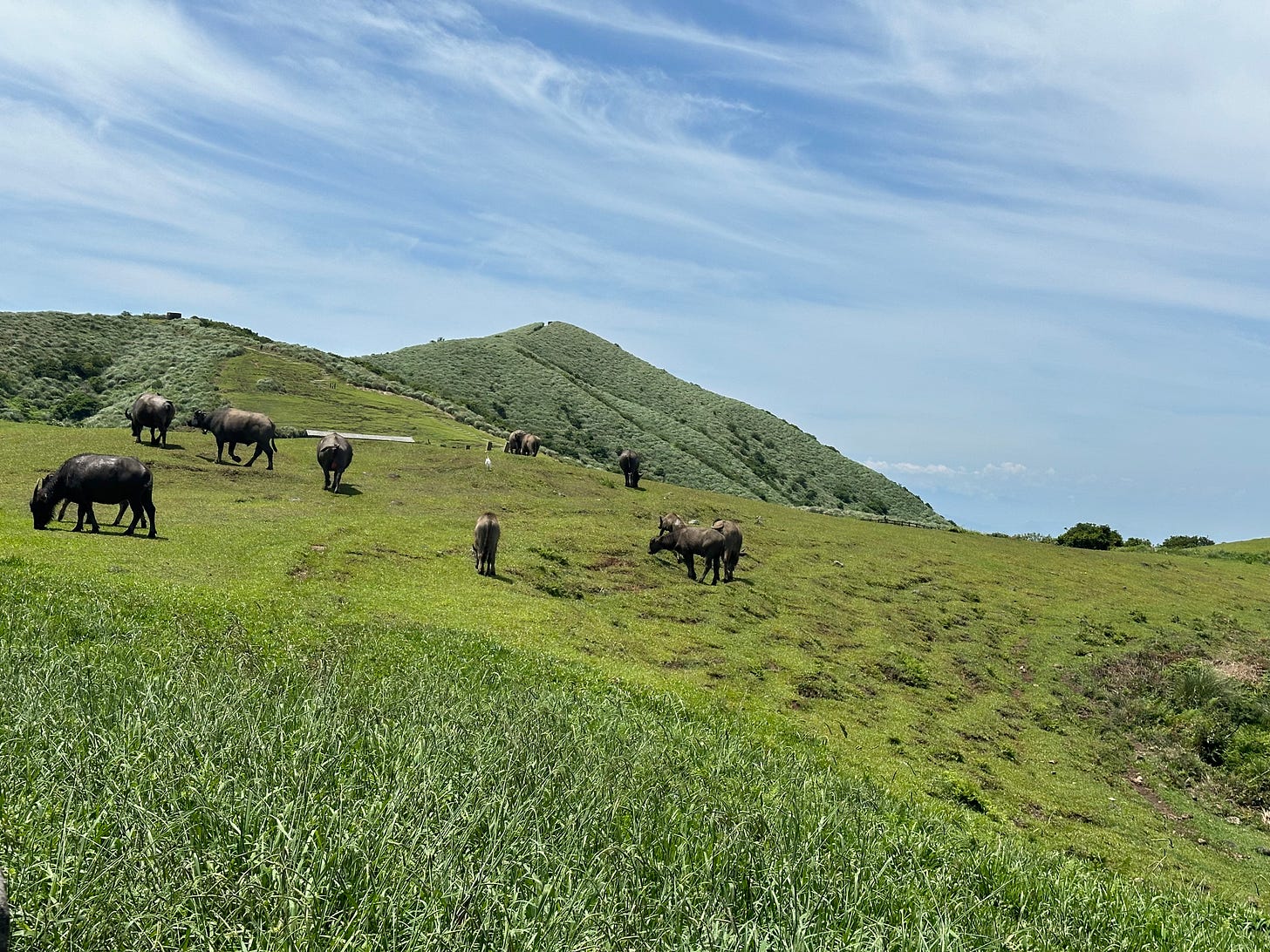

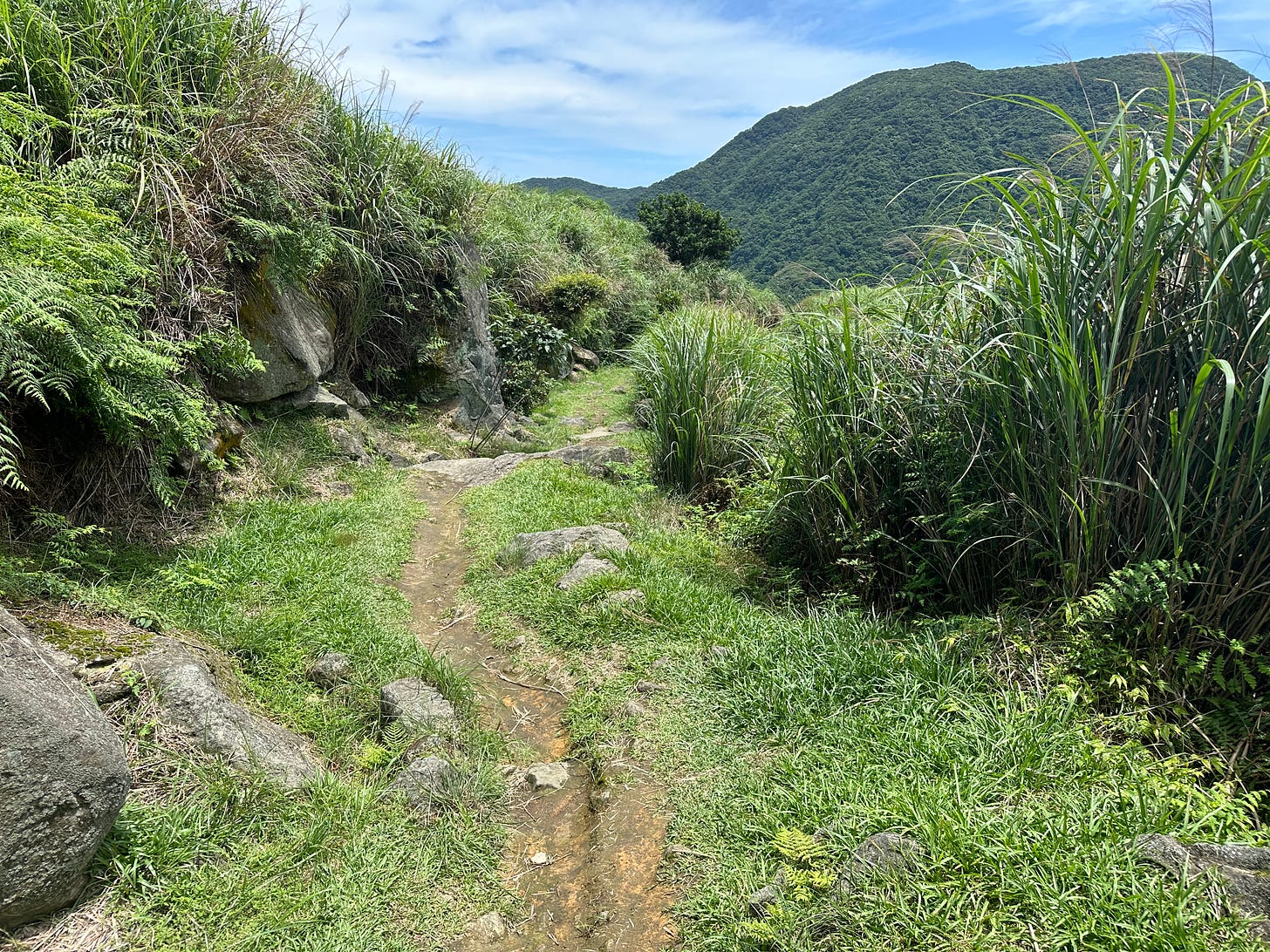

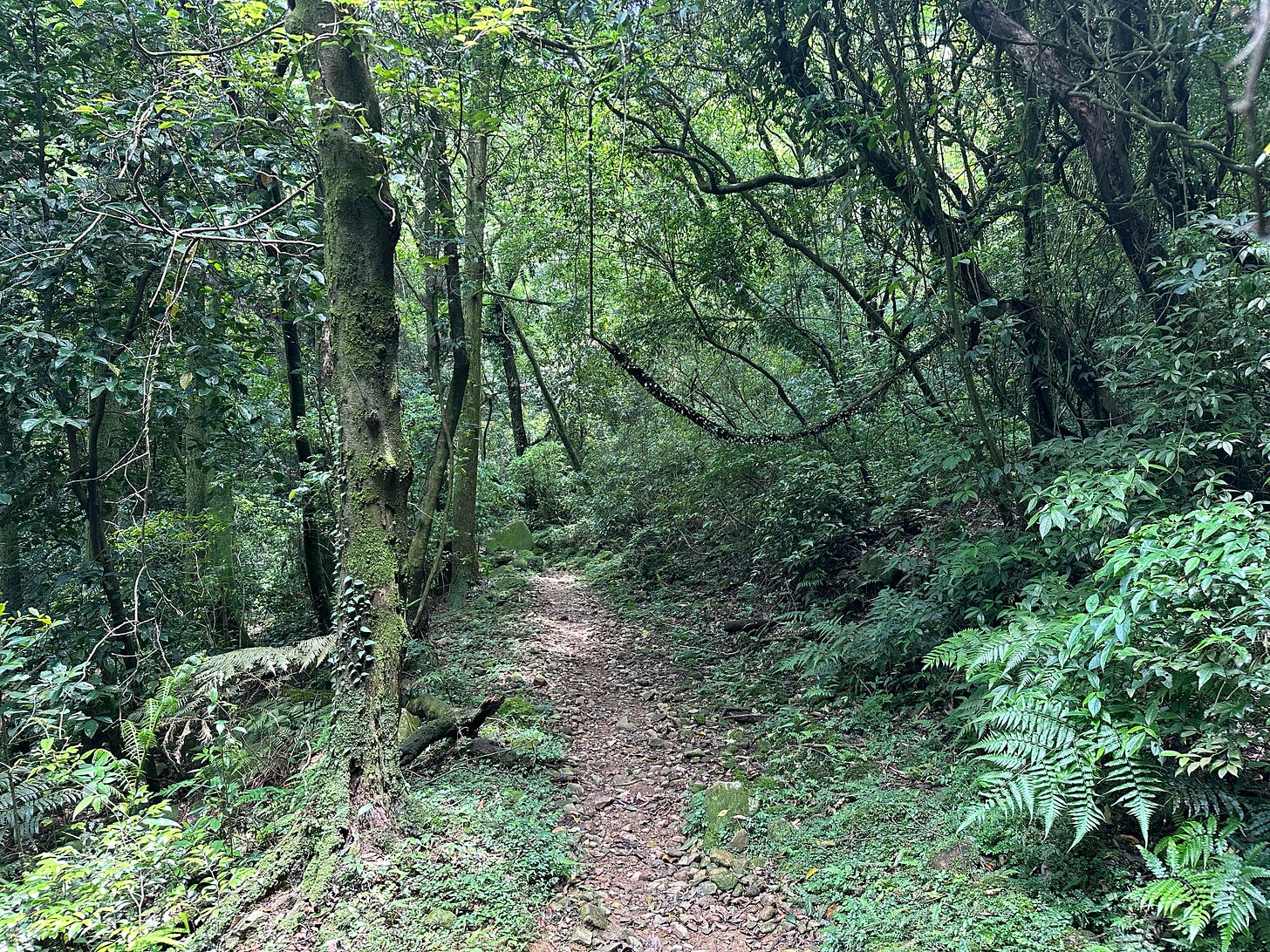

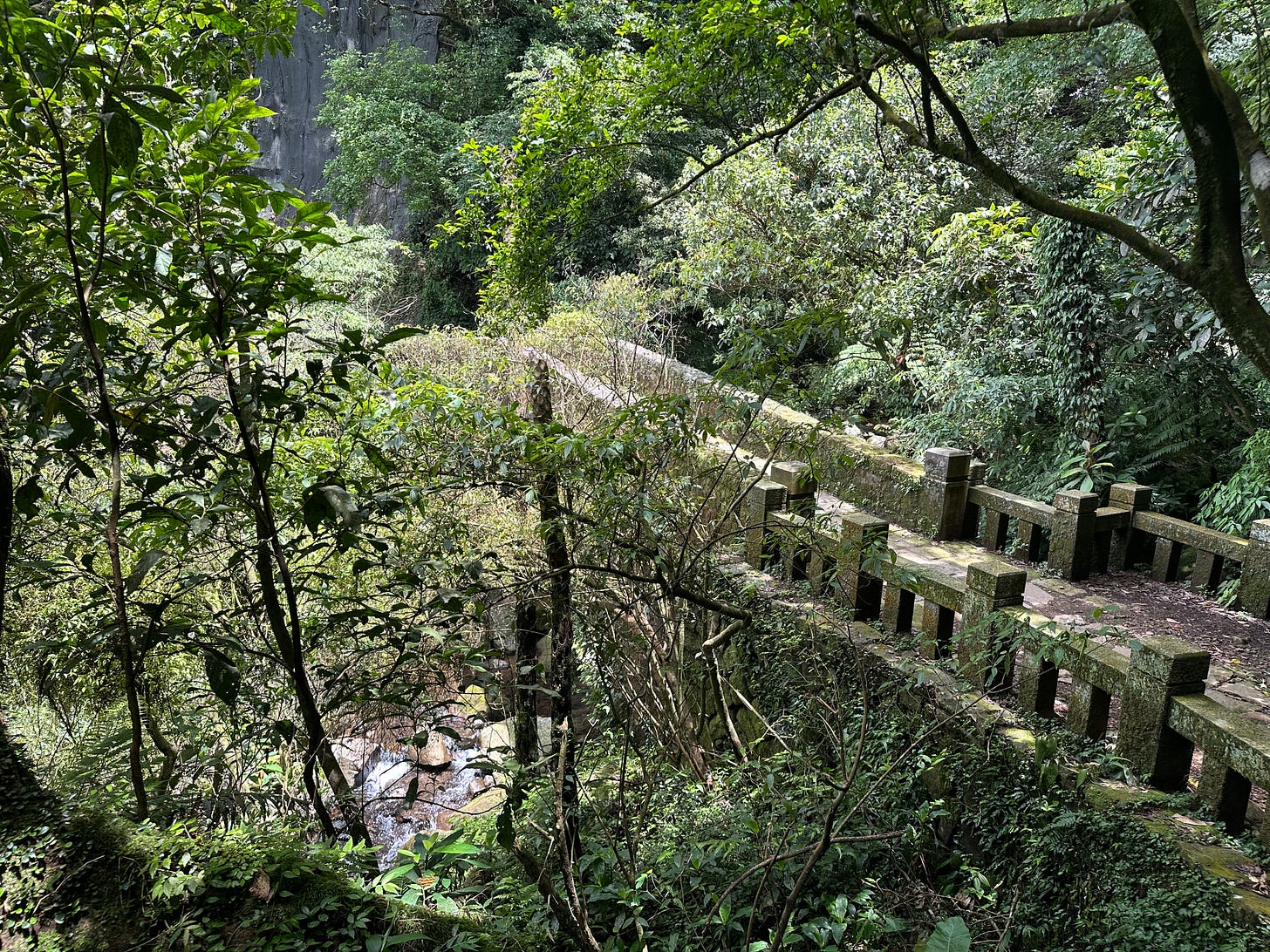
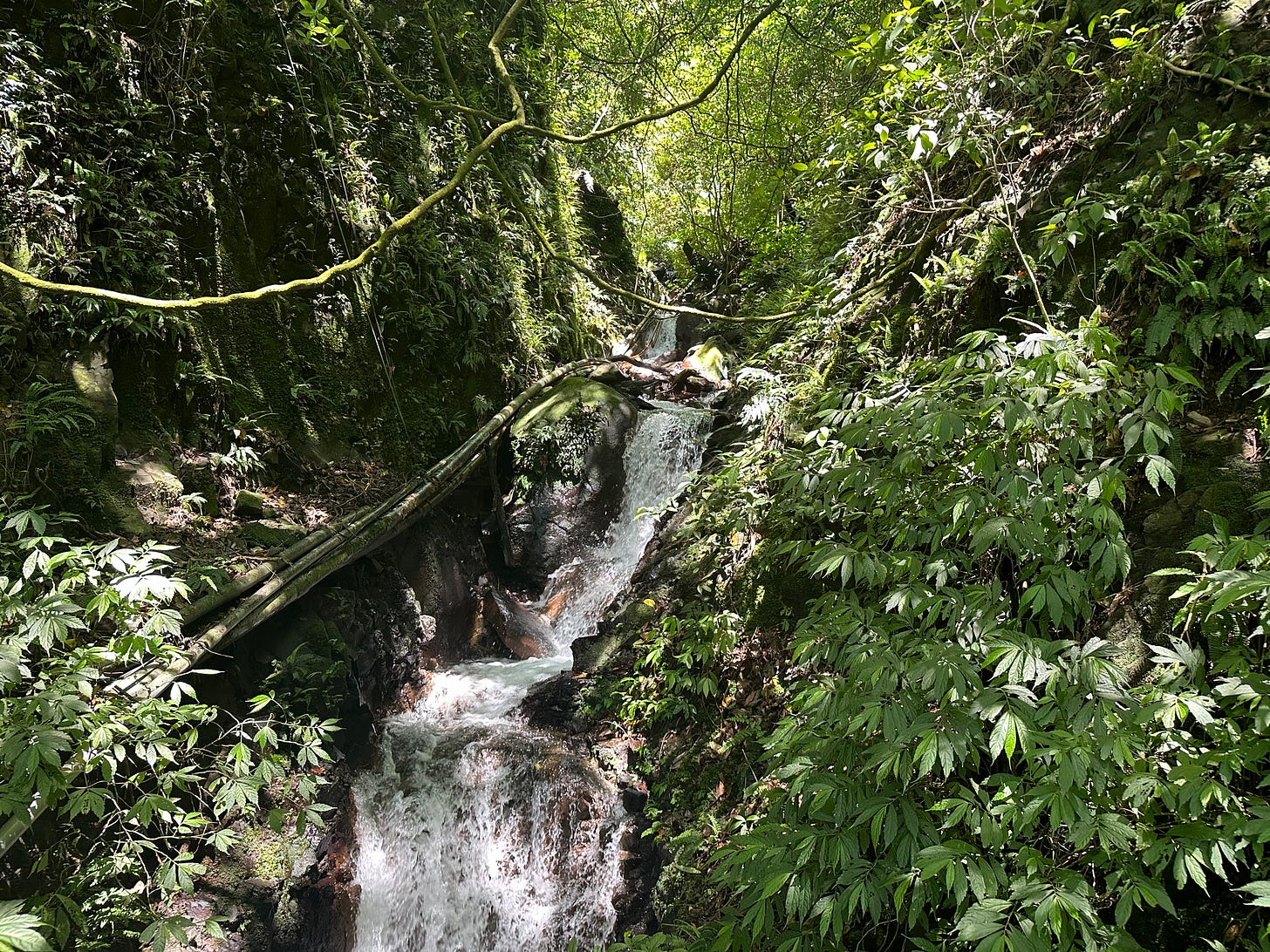
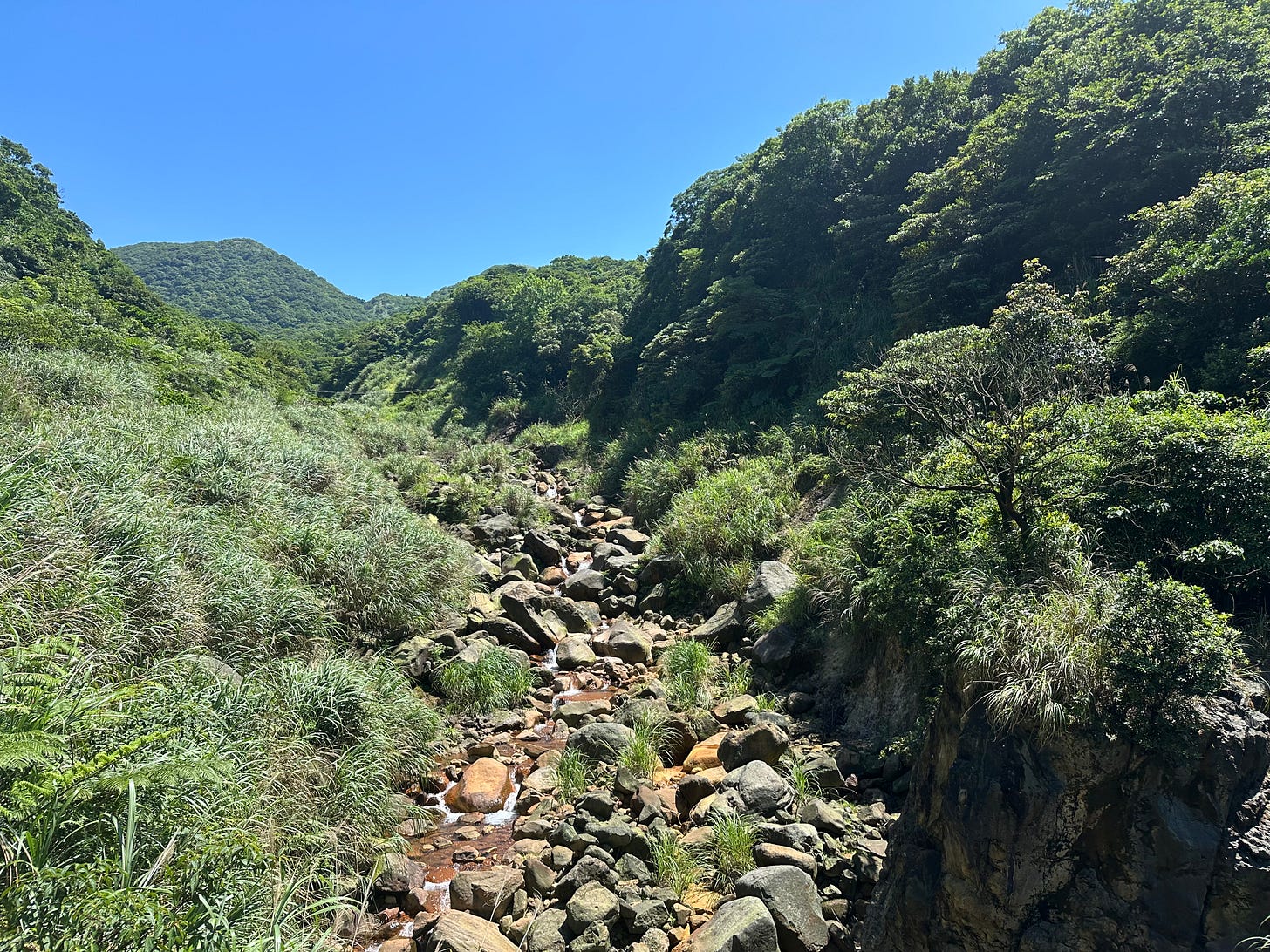
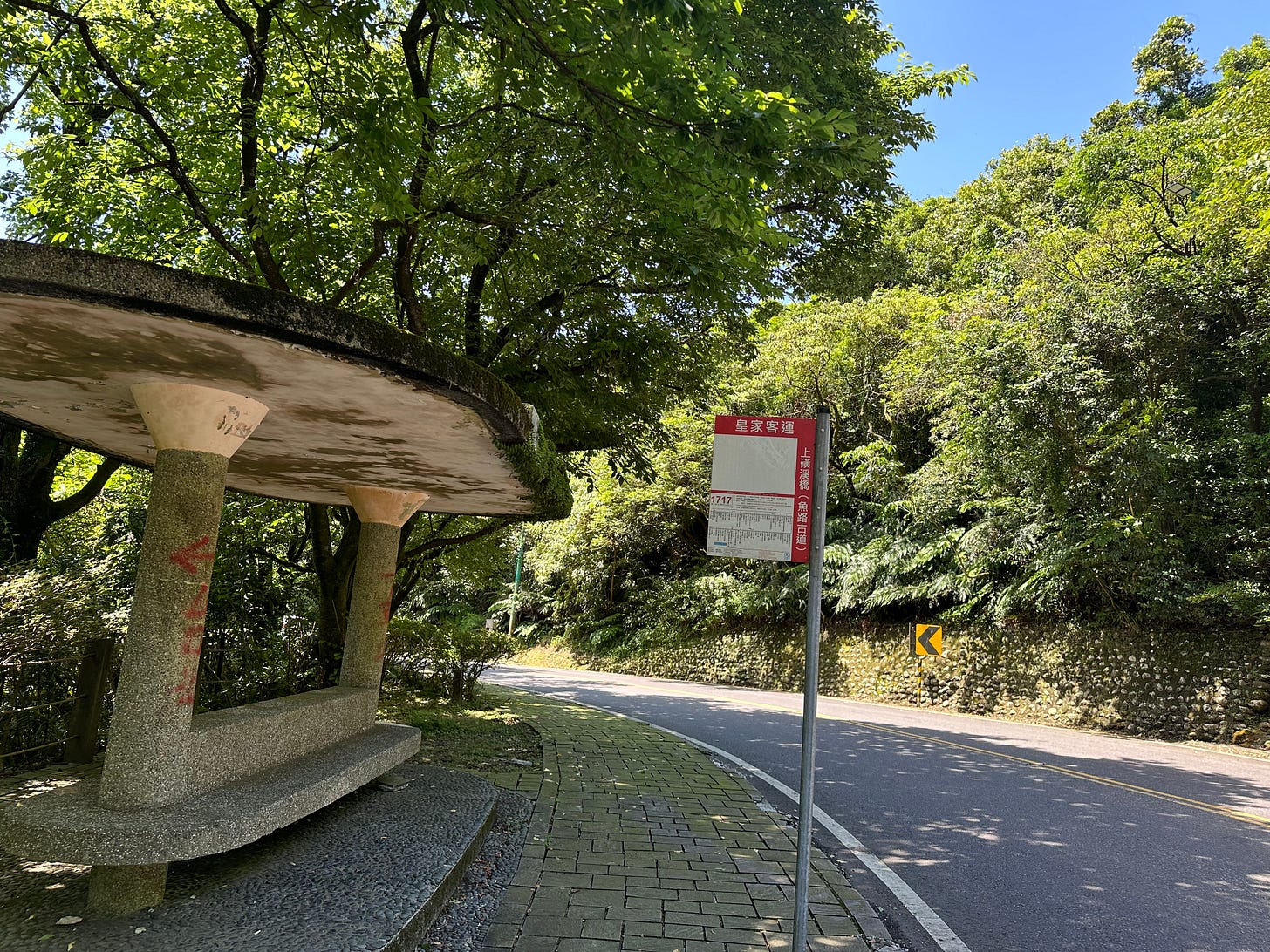
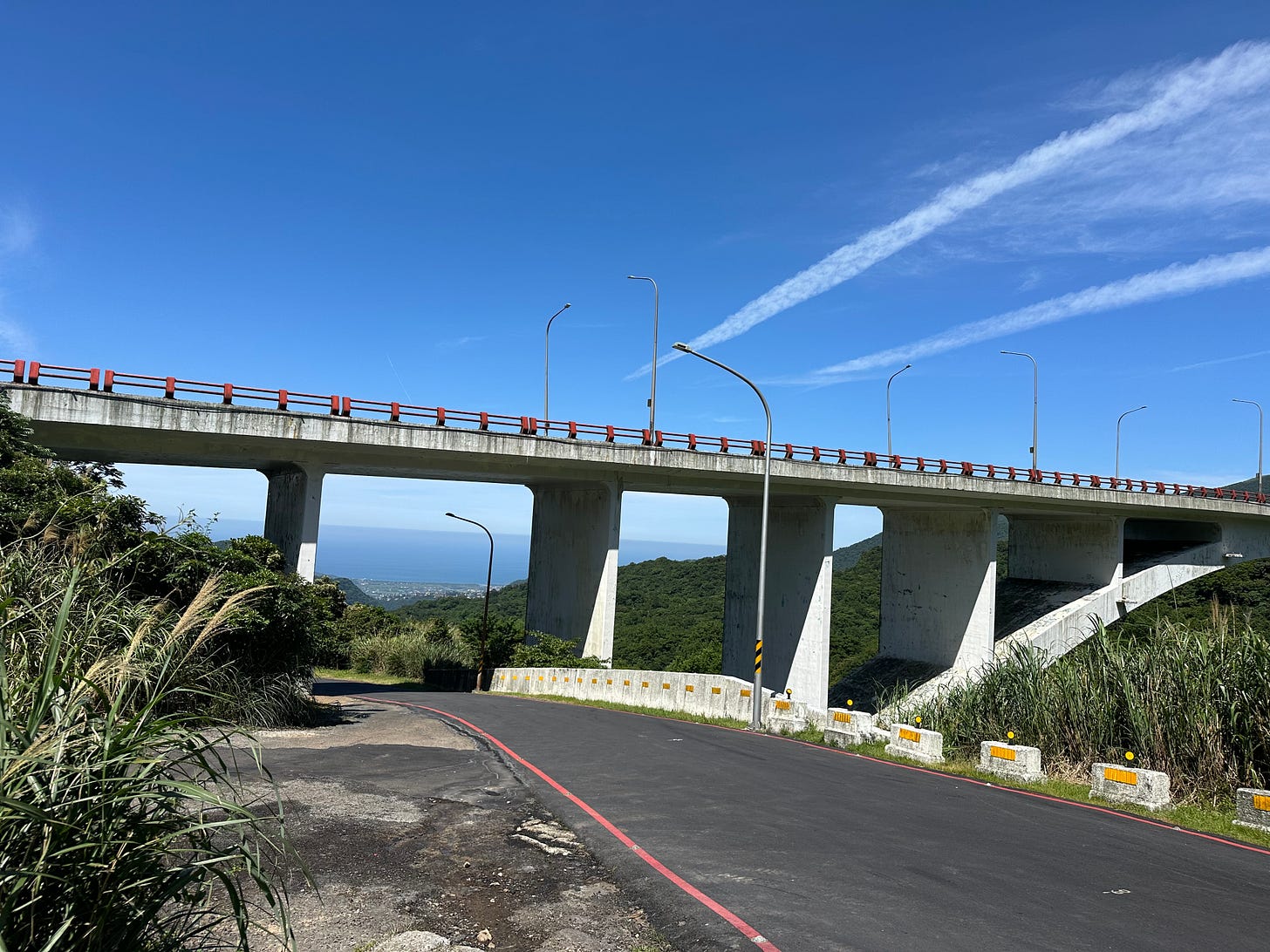
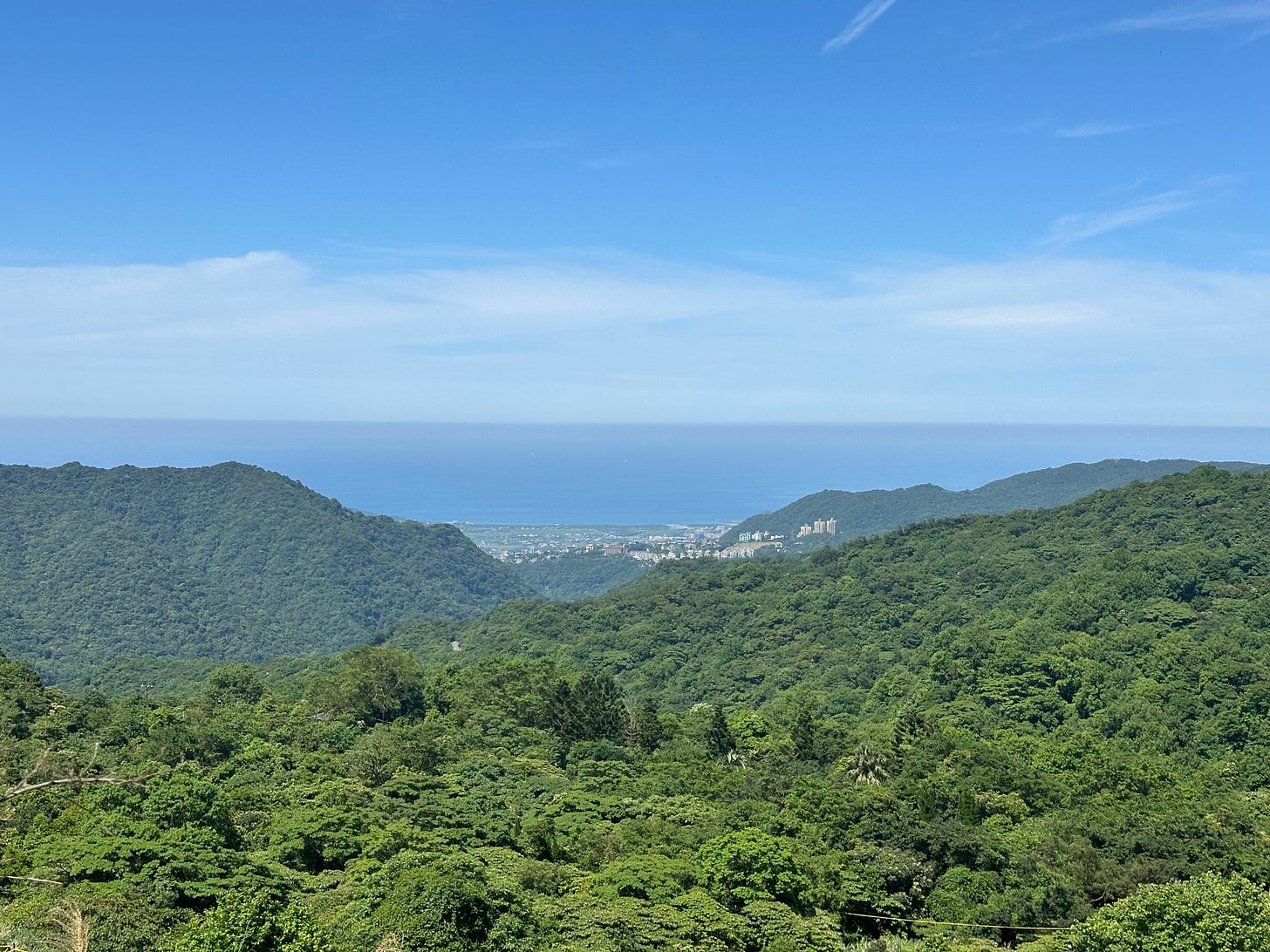
Lovely story - especially about the flask ! Looks a great trail too !
Thanks Igor for keep sharing your nice notes & photos inspired by your trips.
Yours, L.